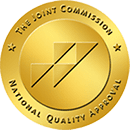Understanding and recognizing the symptoms of crack abuse is crucial when dealing with the challenges of addiction. We acknowledge that struggling with substance use can be an overwhelming and isolating experience. At Evoke Wellness at Cohasset, we are here to provide you with the support and care you need on your journey to recovery. Call us at 866.931.6429 to learn more about our crack addiction treatment in Cohasset.
Crack vs. Cocaine
Crack vs. cocaine are two forms of a potent, highly addictive drug derived from the coca plant native to South America. Despite originating from the same plant, they differ significantly in several aspects, such as the method of use, immediate effects, and potential consequences of abuse.
Chemical Composition
Cocaine, often referred to as powdered cocaine or simply coke, is a stimulant drug that comes in the form of a fine white powder. It is derived from the leaves of the coca plant and typically processed into a hydrochloride salt, making it soluble in water. This form of cocaine is often associated with a higher socioeconomic class due to its relatively high cost.
On the other hand, crack cocaine, commonly known as crack, is a smokable form of cocaine. It is produced by mixing powdered cocaine with baking soda or another alkaline substance and heating it until it solidifies into small rocks or crystals. Unlike powdered cocaine, crack is not water-soluble and is typically smoked in glass pipes or other makeshift devices. Crack cocaine is cheaper to produce and purchase than powdered cocaine, making it more accessible to lower-income individuals.
Methods of Use
The route of administration is one of the key differences between crack and powdered cocaine. Powdered cocaine is commonly snorted or dissolved in water and injected intravenously, allowing for a slower onset of effects but a longer-lasting high. Some users may also rub cocaine powder on their gums or inhale it through the nose (also known as “sniffing” or “snorting”).
Crack cocaine, on the other hand, is heated and smoked, leading to a rapid and intense onset of effects. When smoked, crack reaches the brain more quickly than powdered cocaine, producing an intense and short-lived euphoria known as a “rush.” This quick onset and short duration of effects contribute to crack highly addictive nature.
Social Implications
The differences between crack and powdered cocaine extend beyond their chemical composition and methods of use. Historically, crack cocaine has been associated with inner-city communities, poverty, and crime, while powdered cocaine has been more prevalent among wealthier individuals. This disparity has led to a disproportionate impact on certain populations and has fueled debates regarding racial and socioeconomic biases in drug policy enforcement.
For instance, the crack epidemic in the 1980s and 1990s in the United States had devastating consequences, particularly in low-income urban areas. The crack epidemic was marked by widespread addiction, violence, and significant strain on social and healthcare systems. The disparate sentencing guidelines for crack versus powdered cocaine offenses further exacerbated the issue, with crack offenses receiving much harsher penalties.
Symptoms of Crack Abuse
Identifying potential signs and symptoms of crack abuse can often feel challenging, but knowing the possible physical, psychological, and behavioral indicators can help recognize if a loved one is struggling.
Physical Signs
- Bloodshot or glassy eyes
- Dilated pupils
- Sudden weight loss
- Signs of hyperactivity, such as rapid speech and restlessness
- Increased energy levels
- Persistent cough
- Burns on the hands or lips from smoking
- Frequent sniffles or nosebleeds
Psychological Indicators:
- Extreme mood swings
- Elevated levels of anxiety
- Paranoia
- Hallucinations
- Increased aggression
- Irritability
- Periods of hyperactivity followed by exhaustion
Behavioral Changes:
- Uncharacteristic neglect of personal appearance
- Social isolation
- Financial problems
- Legal issues
Treatment for crack addiction should be comprehensive, addressing the disease’s physical, mental, and social aspects. At Evoke Wellness at Cohasset, our team of dedicated professionals specializes in providing comprehensive, personalized treatment programs for individuals struggling with substance use, including crack cocaine.
Crack Addiction Treatment at Evoke Wellness at Cohasset
In times of struggle, it’s important to remember that help is always available. If you suspect someone you love is battling with crack abuse, Evoke Wellness at Cohasset is ready to help. Our compassionate, experienced team is committed to guiding individuals and their families toward recovery. You can call us at 866.931.6429 today to learn more or fill out our online form.




